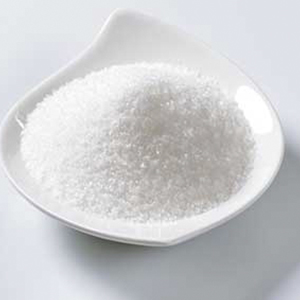
News
Déc . 07, 2024 13:18 Back to list
products with a chelating agent factory
Understanding Chelating Agents The Backbone of Various Products
Chelating agents play a critical role in various industries, serving as essential components in products that demand high levels of cleanliness, stability, and efficiency. These agents, capable of binding metal ions, are used in a wide array of applications, from pharmaceuticals and agricultural products to household cleaners and industrial processes. In this article, we will explore the significance of chelating agents, the types of products they are found in, and the workings of factories specializing in their production.
What Are Chelating Agents?
Chelating agents, also known as chelators or sequestering agents, are organic compounds that form stable complexes with metal ions. This interaction prevents these metals from reacting with other substances in their environment. The word chelate is derived from the Greek word chēlē, which means claw, reflecting the way these agents grasp at metal ions. Common examples of chelating agents include EDTA (ethylenediaminetetraacetic acid), citric acid, and DTPA (diethylenetriaminepentaacetic acid).
Importance of Chelating Agents in Various Products
1. Pharmaceuticals In the pharmaceutical industry, chelating agents are crucial for enhancing drug stability and bioavailability. They can be incorporated into formulations to bind trace metals that could catalyze degradation reactions, thus prolonging the shelf life of medications. For instance, EDTA is often included in injectable drugs to prevent contamination from metal ions that may arise during production or storage.
2. Agriculture Chelating agents are equally vital in agriculture, particularly in fertilizers. Many essential nutrients, such as iron, zinc, and manganese, often exist as insoluble compounds in soil, making them difficult for plants to absorb. Chelators help solubilize these nutrients, ensuring better availability to crops and improving overall plant health. Products that utilize chelating agents in their formulations result in enhanced growth and yield for farmers.
3. Household Cleaning Products In the realm of household cleaning, chelating agents are used in detergents and cleaners to remove hard water stains and enhance the effectiveness of cleaning formulations. They work by binding calcium and magnesium ions, which contribute to water hardness, allowing detergents to perform more effectively. This application is particularly important in areas where water quality is poor, making chelating agents indispensable in everyday cleaning products.
4. Industrial Applications Many industrial processes rely heavily on chelating agents. In metal finishing, for example, these agents help to mitigate the negative effects of metal contaminants, ensuring a more robust and uniform coating. In the pulp and paper industry, chelators aid in the removal of metal ions that can interfere with processes, enhancing product quality.
products with a chelating agent factory

The Manufacturing of Chelating Agents
The production of chelating agents is a sophisticated process often carried out in specialized factories equipped with advanced technology. Quality control is paramount in ensuring that the chelators produced meet stringent industry standards.
1. Sourcing Raw Materials Factories begin by sourcing high-purity raw materials that serve as the building blocks for chelating agents. Chemical compounds are carefully chosen based on their suitability for specific applications.
2. Synthesis The synthesis phase involves the chemical reactions needed to create the desired chelating agent. This process must be meticulously controlled to ensure the proper reaction conditions, including temperature, pressure, and time.
3. Purification After synthesis, the resultant product undergoes extensive purification to remove any impurities or byproducts. Techniques such as crystallization, filtration, and chromatography may be employed to achieve the required purity levels.
4. Quality Assurance Before these products are released into the market, rigorous testing is conducted to confirm their efficacy and safety. This includes analyses for potency, stability, and potential contaminants.
5. Packaging and Distribution Once cleared, chelating agents are packaged appropriately to ensure they remain stable during storage and transport. Factories often employ eco-friendly packaging solutions to align with modern sustainability trends.
Conclusion
Chelating agents are vital to the functioning of various products across multiple sectors. Their ability to bind and stabilize metal ions enhances the efficacy of pharmaceuticals, agricultural products, household cleaners, and industrial processes. As factories continue to innovate and improve production techniques, the role of chelating agents will only become more significant, paving the way for advancements in numerous fields and contributing to a cleaner, healthier environment.
-
Polyaspartic Acid Salts in Agricultural Fertilizers: A Sustainable Solution
NewsJul.21,2025
-
OEM Chelating Agent Preservative Supplier & Manufacturer High-Quality Customized Solutions
NewsJul.08,2025
-
OEM Potassium Chelating Agent Manufacturer - Custom Potassium Oxalate & Citrate Solutions
NewsJul.08,2025
-
OEM Pentasodium DTPA Chelating Agent Supplier & Manufacturer High Purity & Cost-Effective Solutions
NewsJul.08,2025
-
High-Efficiency Chelated Trace Elements Fertilizer Bulk Supplier & Manufacturer Quotes
NewsJul.07,2025
-
High Quality K Formation for a Chelating Agent – Reliable Manufacturer & Supplier
NewsJul.07,2025
